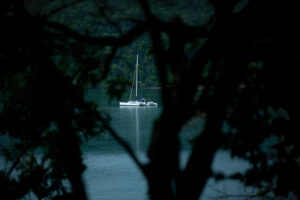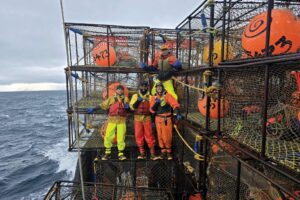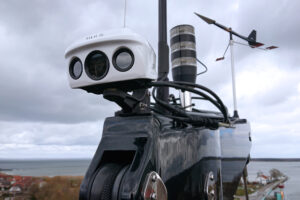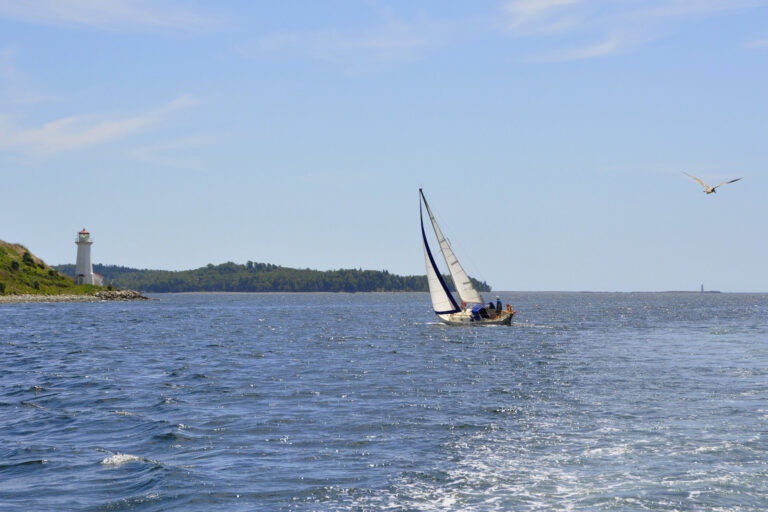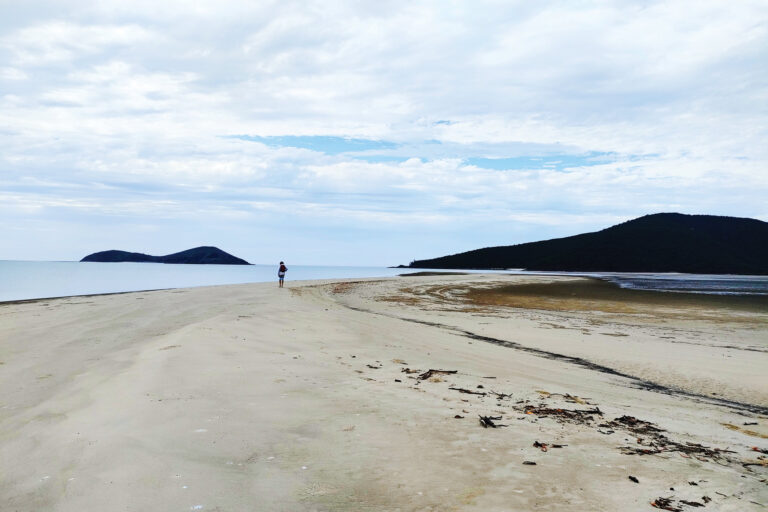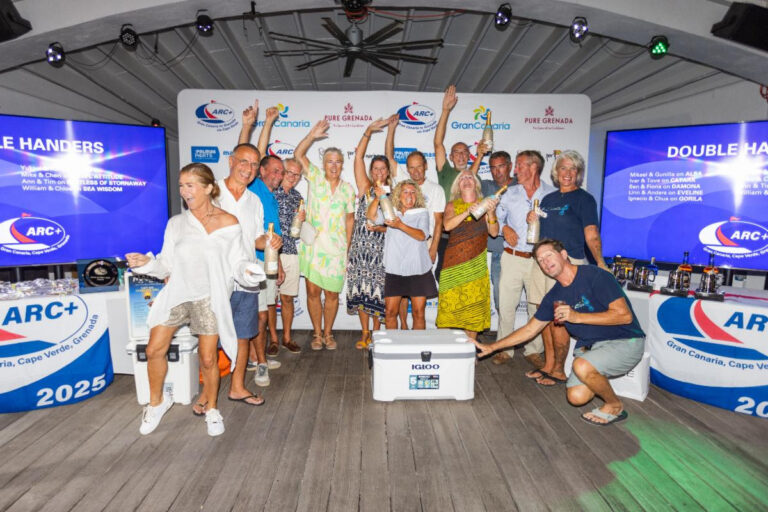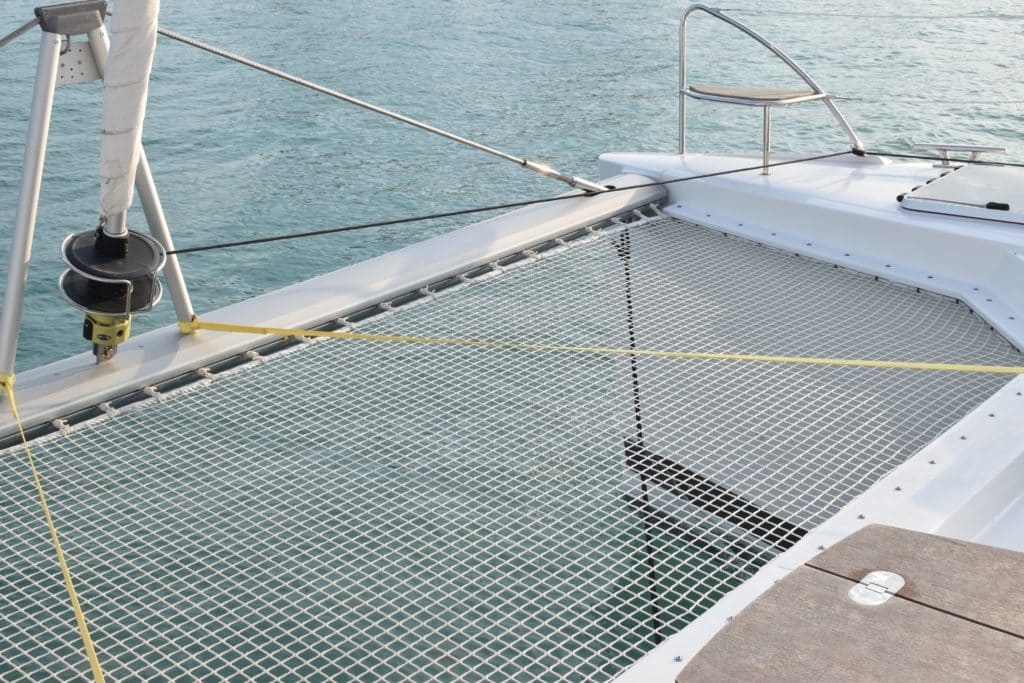
The trampoline on a cruising catamaran takes plenty of abuse from sun, salt and crewmembers’ feet, and over time this wears down the materials used for the trampoline and its attachment points. A regular inspection of the netting and its lashings should reveal any areas that need attention or replacement.
If you own an older catamaran or put on lots of miles, especially in the tropics, where UV rays are at their peak, here are the trouble spots to look for. Most trampolines are manufactured with webbing or netting, and the constant UV exposure they are subjected to can cause the materials to age comparatively quickly. It’s often difficult to evaluate the strength and overall condition of a trampoline by age alone. Most will last five to seven years, but fewer if the material is washed often with bleach or strong detergents.
When inspecting the trampoline, walk around on it. Is it bouncy and stiff underfoot? Look at its general condition. Is it shiny or dull? Is there dirt and mold in the fibers?
An old trampoline will look chalky and dull, and it will feel stiff. If it is manufactured with webbing, look closely at the seams, as the thread ages more quickly than the webbing. A high-quality webbing or mesh trampoline will be sewn together with PTFE (also known as Teflon) thread, which lasts considerably longer than the webbing or mesh.
If a bolt rope is used to attach the trampoline to channels on the hulls, look at the corners, which very often show early signs of being cut or otherwise damaged in the groove. If the trampoline is held with grommets, look for corrosion and tearing of the vinyl edge around each eyelet.
Of course, the high-traffic areas will show more signs of chafing. If the trampoline is painted, it will age unevenly, which will result in weak spots. Occasionally, to get more use out of a trampoline, owners will flip the trampoline around and show the underside, which has not been subjected to direct UV rays.
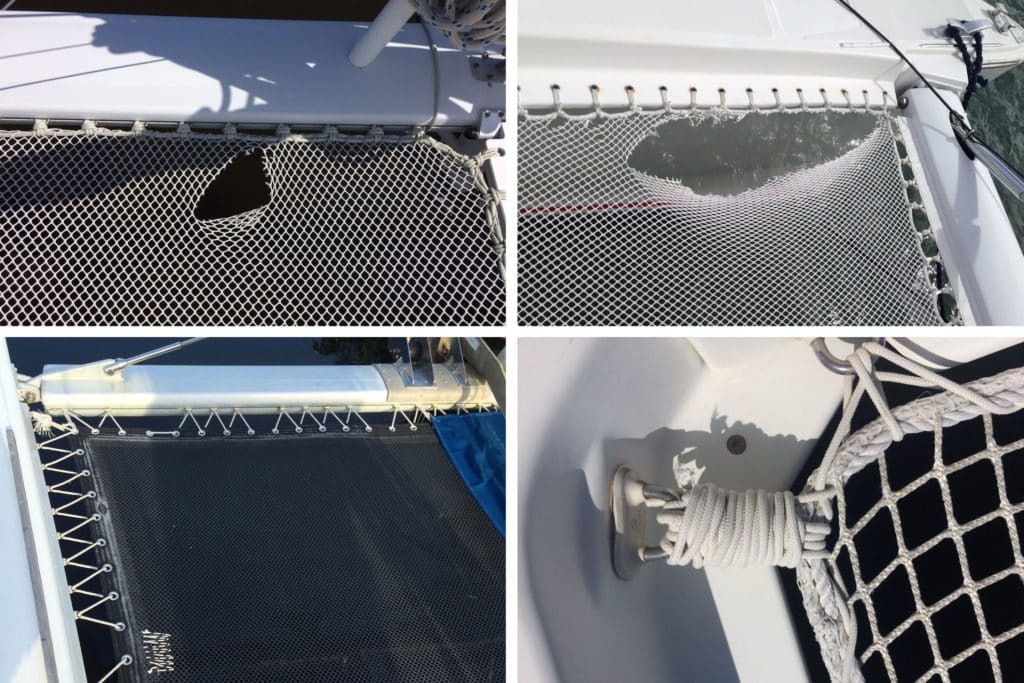
The weakest link with trampolines is often the way they are fastened to the boat. In general, a tightly fastened trampoline will age less and last longer than a sloppily installed trampoline. A loose lacing job will promote chafing at every grommet, slide, rod or netnob (a type of lacing hardware) all around the netting. Check for covered lashing lines, since even though the cover may become chalky, the core will likely still be OK.
Sometimes Dyneema rope is used to counter this chafing, but even with its superior strength, it is really a matter of time until a line breaks and a side of the trampoline will separate — not a safe situation.
For trampolines made out of nets, look at the corners, which are the high-load areas, and where the anchor and chain is stored and pulled up. Due to the ease of installation, net trampolines are becoming more popular. With a properly secured rope edge, they can be very sturdy and offer the least impact in a seaway.
Dyneema nets are very robust, with excellent UV resistance. They do not stretch, though, which means if they are not fastened properly (for instance if they’re too tight in a spot), they could impact the structure of the boat. Since this material is very expensive and not very comfortable underfoot, Dyneema nets are typically considered only for high-performance or racing cats.
Other replacement materials include polyethylene and polyester netting, which usually runs less than $100 per square meter, or mesh fabrics that can range from about $20 per yard to about $70.
The trampolines on any multihull are a favorite spot on the boat to lounge, relax, sleep under the stars or look at the sea life while sailing. A properly installed trampoline will give the multihull owner years of enjoyment and enhance the look of the boat.
Etienne Giroire is a longtime sailor and is the founder and owner of sailing-equipment and gear company ATN Inc.


